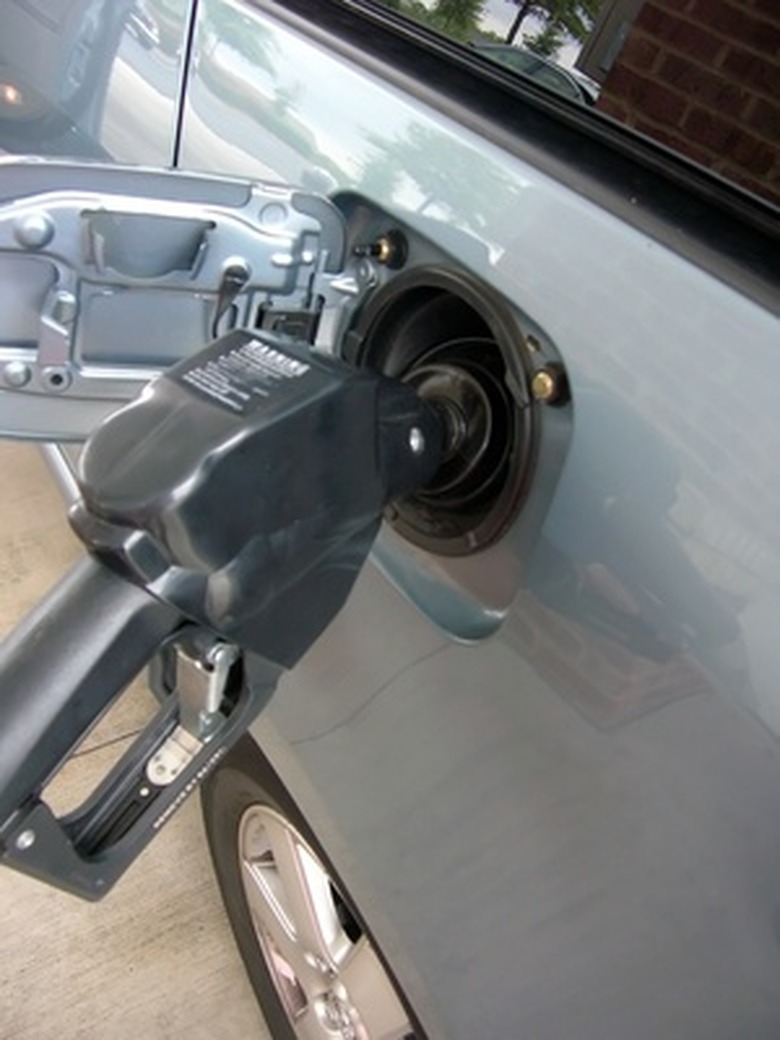How To Calculate Methane Number
An engine's spark plug should ignite fuel, but additional fuel pockets sometimes combust, creating "knocking" in the engine. A fuel's methane number describes how likely it is to combust uncontrollably. Hydrogen receives a methane number of "0," and methane receives a number of "100." Other fuels lie elsewhere on this scale. Engineers measure a fuel's methane number experimentally, using an adapted engine. But when a fuel has a carbon-hydrogen ratio of at least 2.5, you can use that ratio to calculate its methane number.
Step 1
Determine your fuel's H/C ratio. You can calculate this with the chemical formula by dividing the number of hydrogen atoms by the number of carbon atoms, but heavier fuels will more likely be labeled by H/C ratio than by chemical formula. This example will use a fuel with an H/C of 3.72.
Step 2
Multiply the H/C by 508.04. So 3.72 * 508.04 = 1,889.9
Step 3
Square the H/C ratio. So 3.72 * 3.72 = 13.84
Step 4
Multiply your answer by -173.55. So 13.84 * -173.55 = -2,401.93
Step 5
Find the cube of the H/C ratio:
3.72 * 3.72 * 3.72
\= 51.48
Step 6
Multiply your answer by 20.17. So 51.48 * 20.17 = 1,038.35
Step 7
Add the answers from steps 2, 4 and 6. 1,889.9 + -2,401.93 + 1,038.35 = 526.32
Step 8
Subtract 406.14 from your answer. 526.32 – 406.14 = 120.18
Step 9
Multiply your answer by 1.624. So 120.18 * 1.624 = 195.17
Step 10
Subtract 119.1 from your answer. 195.17 – 119.1 = 76.07
This answer is the methane number.
Cite This Article
MLA
Menezes, Ryan. "How To Calculate Methane Number" sciencing.com, https://www.sciencing.com/how-7525642-calculate-methane-number/. 7 August 2017.
APA
Menezes, Ryan. (2017, August 7). How To Calculate Methane Number. sciencing.com. Retrieved from https://www.sciencing.com/how-7525642-calculate-methane-number/
Chicago
Menezes, Ryan. How To Calculate Methane Number last modified March 24, 2022. https://www.sciencing.com/how-7525642-calculate-methane-number/
